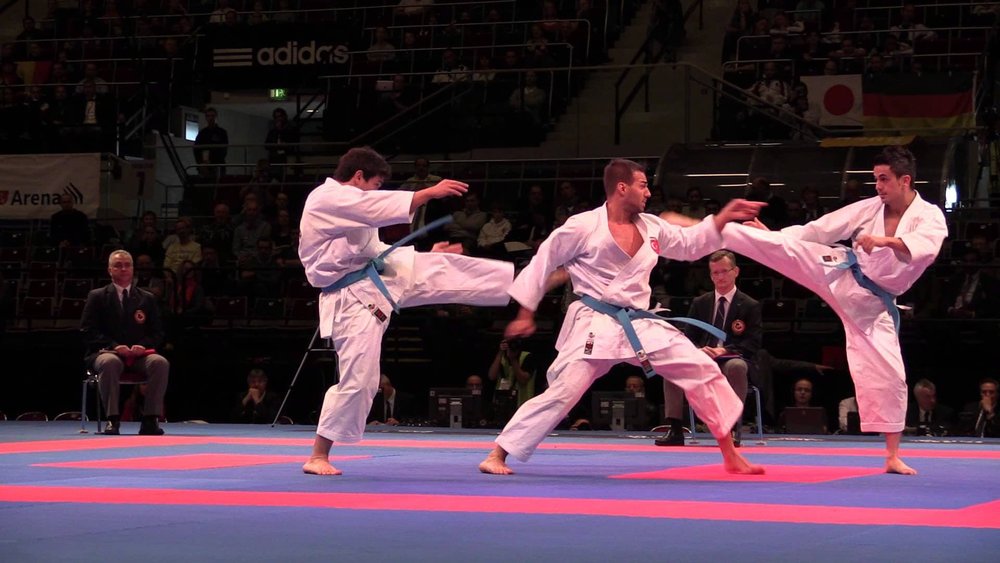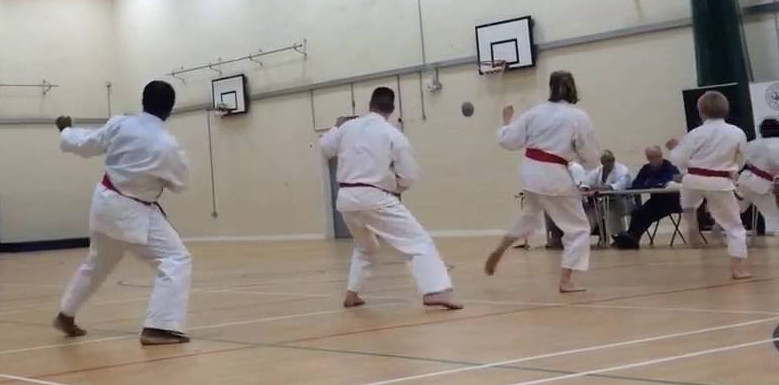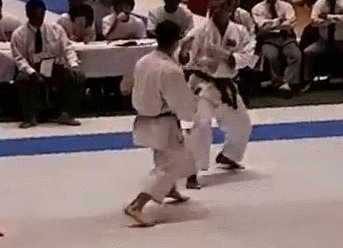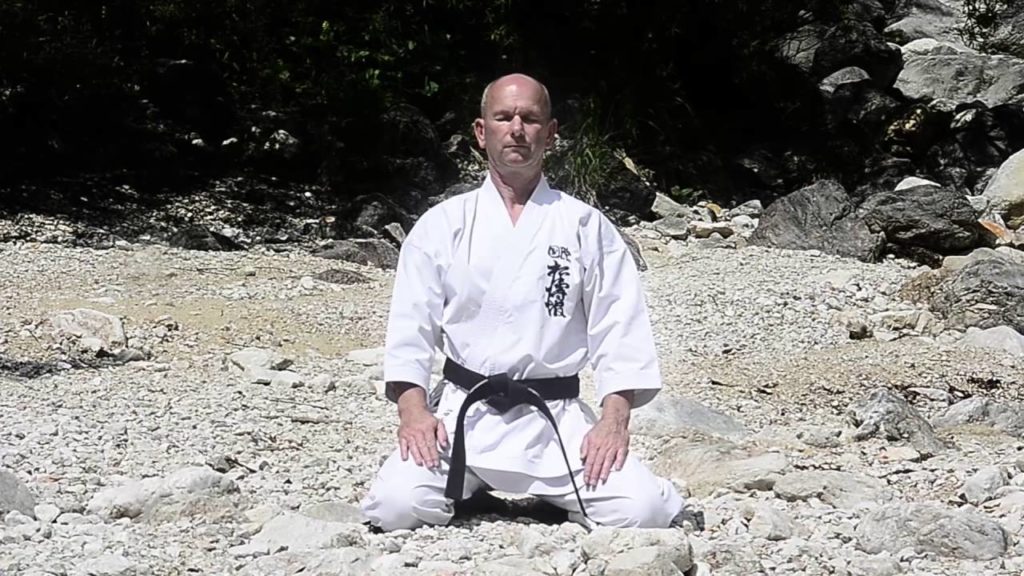As a leader and manager of people you are at times confronted with tough choices and when the pressure rises and things start to get heated, I like to lean back and reflect at my younger years.
During my late teens and all the way into my thirties I have been a student of martial arts. I have spent countless hours in Dojos all around the globe and I have enjoyed it to the point of obsessing over it.

My base has been traditional Shotokan Karate but I loved straying off course and discovering other martial arts such as JuJitsu, Judo, Aikido, Aikibudo, Shinjitsu, Kempo, and more.
I could go on about my glory days and the benefits of practicing these arts and the physical strengths you will gain if you are practicing between four and seven times a week. However this article is not the about physical strength but about mental strength.
Kihon
Karate requires practice, and it requires a lot of it. This is due to learning the proper coordination of movements to end in a single focused blow to your opponents body.
You start out to learn your basic moves. At first, they will look and feel odd. You have to use your mind to force your body to follow the moves. Then, as you move up in the ranks, you learn to internalize these moves and as they become more natural to your body, you start to learn how to apply those moves in combination with other moves.

Oi zuki, mae geri, gyaku zuki, or in tongue-in-cheek-English “Punch, kick, other-punch”, is a basic combination you learn early on. It will take about three to four training sessions to get used to this particular combination, and it will take you between five and ten years to master it. Really, I mean it, it will take that long to learn this basic combination to the point where you can apply it as a matter of reflex rather than -Think- about applying it.
Here is where this will help you with your leadership development.
As a leader you too have to learn basic moves in order to learn and grow in your field. You usually start at level one, which John Maxwell calls the positional leader. At this level you have become a manager of sorts over a team of people. At this point you will have to learn to Earn Trust.
At first this will feel odd. You have to Think about every decision and every meeting you have with your team. Then, as you grow your trust in your team, you learn to internalize these lessons and as they become more natural to your mind, you start to learn how to get to level 2, which is the permission level.

Kata
From Wikipedia: “Traditionally, kata are taught in stages. Kata is often described as a set sequence of karate moves organised into a pre-arranged fight against imaginary opponents. The kata consists of kicks, punches, sweeps, strikes and blocks. Body movement in various kata includes stepping, twisting, turning, dropping to the ground, and jumping.”

While this will seem strange at first you will eventually come to realize that performing a Kata with the right emphasis and the right mindset will help you improve your techniques, your strength, your form, and your timing.
Once you have a fair grip on the basics ( kihon ) as a leader, you need to learn to combine a whole range of different qualities and environments in order to achieve the best results with and for your team. You have to study different approaches to solve certain situations to be able to pull them out when you have to. You have to be able to set and monitor goals, give feedback, encourage, request, teach, be empathetic or strong. You have to add as many tools to your repertoire as you can, and as a leader you have to be willing and able to use those tools.
In most cases you will be able to select your management style. From tough love, to lending a shoulder to cry on. There have been plenty of studies which seem to show that there is no one-size-fits-all approaches to management. However in Leadership you have to have certain characteristics which will help you achieve level two with your team members. You have to have a mindset of servanthood. You grow yourself and your team. You are very good at observing and listening.
At level two, the permission level, people will follow you because they want to. Your team trusts your decisions and they trust that you have their back. It is where you build relationships with your team, they like you and you like them. In return, they do work hard to keep their commitments to you and your company.
Now at this level, results starting to appear.
Kumite
Kumite is the practical application of kihon and kata. It is, in essence, a formalized fight following stringent rules. These rules are in place to allow the student to learn and practice a combat situation without the fear of a broken nose or other bodily harm. Kumite is what most people think of as a martial arts competition and is as close to combat as traditional Karate will get you.
You will not only learn to apply your techniques but you will also learn to be relaxed, concentrated, anticipate when an attack will happen and improve your reflexes. One important lesson I have taken home from practicing kumite was to always move forward, never move back. The best benefit of kumite however is that of friendship.
If you as a leader are at level three, the production level, you will lead by example. You work hard and you start to help the bottom line of the company. You start to build positive, reinforcing momentum and that momentum will help you break through the largest obstacles.
If you can get yourself and your team to this level, you will soon learn to be relaxed in a stressful environment, concentrate and focus on finding the required solution for the business, and anticipate when an you will have to make a change to the team, the project, or the goals before they become a real issues.

At this point you will always move forward. The only time you can lose is when you give up on something. You cannot be defeated for as long as you learn and grow and try again. And that folks is true in all parts of life.
Bushido
Karate, which stands for empty-hand, the karate-do, or the way of karate is given great emphasis. It is where the bushido, or the way of the warrior, makes its mark on Karate and lets us reflect on the roots of the art we are students of. This is in contrast to sports like UFC, or modern self defense styles which may or may not borrow from the traditional martial arts. In the self-defense sports, the goal is to enable the trainee to defend himself in certain situations.
My personal motivation to training martial arts has always been to seek control over mind and body, as well as staying in good shape. I was never under the illusion to defend with a single kick against a knife or a semi automatic. I have had the pleasure of training kids, and lower ranks in those days and it was one of the most rewarding activities I have ever experienced.

After all, in nature, we are bound to grow up, Learn from others, Apply the lessons learned, and then pass the information on to The next generation. Do as I do, not as I say has become one of my rules. In order to get there though I had to become the best I could be and I had to remain in that shape for as long as I wanted to teach.
Leaders as well should always strive to follow learn from others, apply those lessons, and then pass them on to your team.
“Leadership is a journey and not a destination”
The wise Sensei
For me, those days have long since passed and I know that the younger-me could pick me apart in an instance. However the ‘do’ ( the way ) has remained with me ever since. I am working hard, I am humble in working with and for my team. As a leader, I am forward looking and I have the back of every single individual in my team.
I try to lead by example and teach and grow my team. As a leader you should strive to be the Samurai and not the Ninja. Be committed to your team and your company, learn, read, study your whole life and most importantly practice what you preach.
http://www.youtube.com/watch?v=aPwXeg8ThWI
